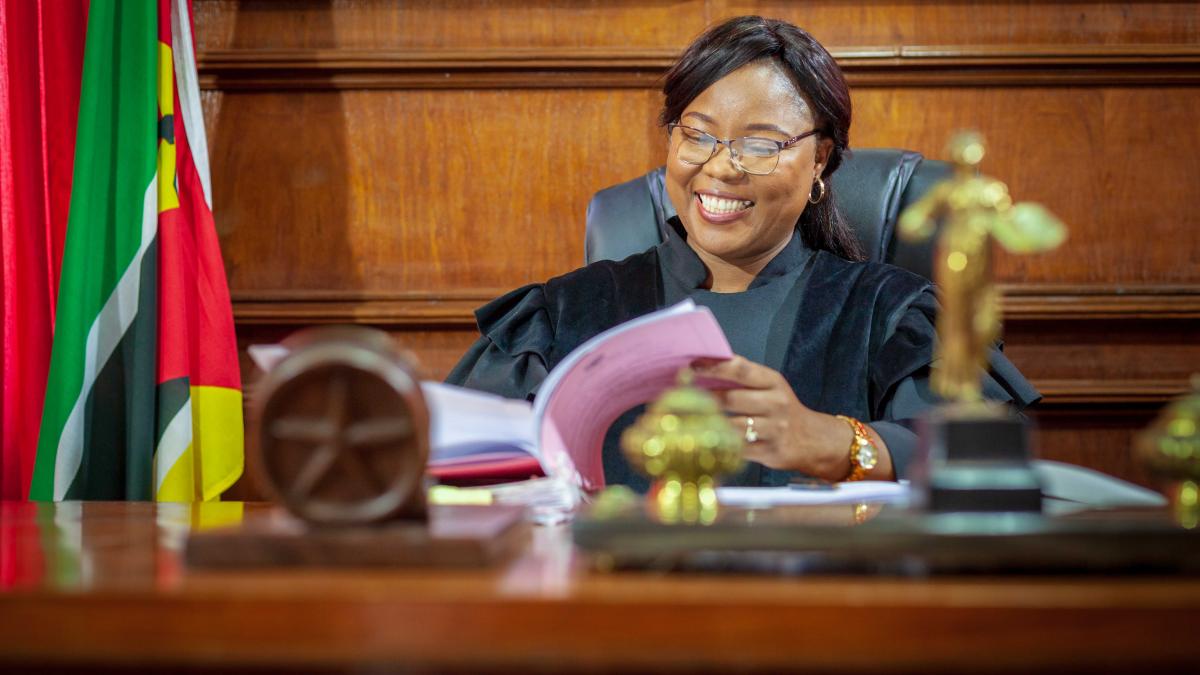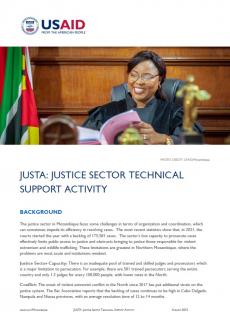
JUSTA: JUSTICE SECTOR TECHNICAL SUPPORT ACTIVITY
BACKGROUND
The justice sector in Mozambique faces some challenges in terms of organization and coordination, which can sometimes impede its efficiency in resolving cases. The most recent statistics show that, in 2021, the courts started the year with a backlog of 175,581 cases. The sector’s low capacity to prosecute cases effectively limits public access to justice and obstructs bringing to justice those responsible for violent extremism and wildlife trafficking. These limitations are greatest in Northern Mozambique, where the problems are most acute and institutions weakest.
Justice Sector Capacity: There is an inadequate pool of trained and skilled judges and prosecutors which is a major limitation to persecution. For example, there are 501 trained persecutors serving the entire country and only 1.3 judges for every 100,000 people, with lower rates in the North.
Conflict: The onset of violent extremist conflict in the North since 2017 has put additional strain on the justice system. The Bar Association reports that the backlog of cases continues to be high in Cabo Delgado, Nampula and Niassa provinces, with an average resolution time of 12 to 14 months.
Threats to Conservation: Mozambique’s conservation areas cover one-quarter of the country’s territory, but the low rates of prosecution of wildlife violations harm efforts to protect communities from traffickers and rebuild wildlife populations virtually wiped out during the civil war three decades ago.
PROGRAM DESCRIPTION
JUSTA is a three-year activity which aims to bolster the capacity of justice sector institutions to prosecute corruption, wildlife trafficking and human rights violations. This activity will prioritize the less-developed North of Mozambique, focused on the provinces of Cabo Delgado, Nampula, and Niassa. USAID will work with the Attorney General’s Office (PGR) and the Supreme Court (TS) through a government-to- government partnership. The Supreme Court will contract the training with the national Judicial Training Center (Centro de Formação Jurídica e Judiciária - CFJJ). By this means, JUSTA will strengthen the justice system’s capacity to produce training modules and learning tools that will help standardize the quality of services provided by judges and prosecutors. This approach meets broader USAID goals of increased use of local partners in implementing activities.
JUSTA will contribute to strengthening the justice system while promoting economic growth and democracy in Mozambique. The activity will support anti corruption measures that include supporting the regulation and implementation of select laws and policies, recognizing the detrimental impact corruption has on the country’s economic growth and development. JUSTA will train prosecutors and judges in procedures and guides to improve prosecution of wildlife cases, promoting detention and law enforcement, as well as, in handling human rights cases especially in the north.
EXPECTED RESULTS AND IMPACTS
It is expected that JUSTA will contribute towards the following objectives:
Improve systems and processes to prosecute and adjudicate wildlife crime, corruption and human rights cases across Cabo Delgado, Nampula and Niassa.
Build capacity including integrating key concepts into the judicial training institute curriculum of the GRM for prosecutors and judges.
Strengthen coordination between prosecutors, judges, and investigators to process cases.
Implementing Partner:Procuradoria Geral da República (PGR) and Tribunal Supremo (TS) | Goals:
| Life of Activity:December 2022 - December 2025 | USAID funding:$1,005,000 PGR
$1,195,000 TS |
USAID Contact:Artur Chirindja, | Geographic Focus:Cabo Delgado, Niassa, Nampula and conservation areas |

